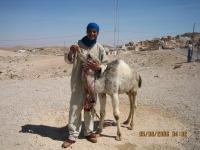All these things have been interpreted in the American press as meaning that Russia has obtained complete military control of Estonia. She could have it, of course, if she desired it enough.
135 million people could easily coerce a million and a quarter people; but the Pact to which they have assented definitely guarantees Estonia’s sovereign rights, and sets up that there shall be no interference with the economic system or the state organization of either country. That is, Estonia agrees to make no attempts to interfere with Russia’s form of Communism and Russia agrees to make no effort to impose her Communism on Estonia. The small country can go peacefully on with her present capitalism, modified and controlled by the competition on the one-hand of state-owned and operated industry and on the other, the competition of co-operative enterprise. In state-owned industries and co-operative undertakings, we have seen that Estonia and Russia are not at variance; but they differ in their attitude toward capitalism. However, this Pact allows Estonia to work out that problem in her own way.
One might view this magnaminity with skepticism, were it not that it is clearly to the advantage of both parties. And the Trade Agreement is even more so. For Estonia, as we have seen, is far from rich and needs more trade, especially with the east. The Kreenholm Spinneries, near Narva, for instance - those enormous textile mills we saw all lit up at midnight the first night we came to Estonia - were originally built to supply Russia’s demand for cloth. Russia certainly needs all and more than Kreenholm can supply, as was evident in the ill-dressed street crowds in Moscow; and the Russians badly need shoes, as we saw. In due time they will undoubtely make these things for themselves; but meanwhile Estonia has them. She prides herself upon her leather-work - shoes, handbags, and luggage. The trade agreement provides for an increase of four and a half times the present turn-over between the two countries; and also grants Estonia the right to move goods along Russian railroads and water-ways as far as Murmansk, Soroka, and the Black Sea. It also provides for a great extension of the transit of Russian goods through Estonian ports; and this of course, will bring increased prosperity to Narva and Tallinn. President Päts broadcast the news of this pact and agreement on Septmber 30th, emphasizing the necessity of keeping the nation at peace. He dnounced “rumor mongers” who alarmingly misrepresented what had taken place; and appealed to his hearers to stand calm and united in these difficult times.
He assured them there was no need for anxiety, and pointed out that the agreement with Russia had spared the Estonians a hopeless military struggle, and at the same time had assured the maintainance of its complete economic and political independence. Whether this peaceful adjustment to changing conditions will endure, depends, not so much on the good faith of its signers, as upon whether it justly represents the best interests of both parties. So far as it does not, it will have to be modified; but so far as it does, nothing can upset it. (END)
A Search for a Happy Country (46)
Järjejutt
TRENDING




















